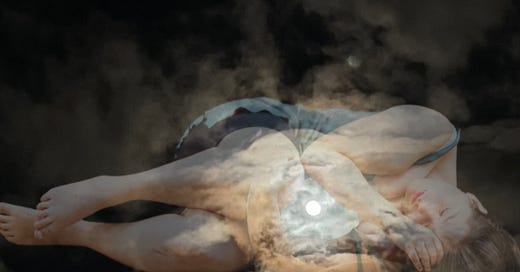The Shape of Absence
an excerpt from Make Your Body the Prayer
A few housekeeping notes:
I’d love to know how this writing lands for you as you are reading it. You are welcome to use the comment box within the substack to share any resonances or questions with me.
A note about formatting—the original thesis is designed with a lot of empty space in it so that poetic statements can be metabolized more slowly before moving on to the next thing. I’m not able to create that clarity of aesthetic within this substack, but what I have done is to use divider lines to indicate the areas in which there would have been a page break.
You are invited to use each divider line as an opportunity to pause, take a breath, and let the words reverberate for a little bit before moving on to the next layer of text.
Also, you will see that footnotes start to appear very densely at some point within this essay. In the original thesis the footnotes were on the same page as the text, making it easier to go back and forth, but since here it is a more intensive process to click the footnote link and then return to your place in the essay, I recommend just reading the main text first and then visiting the footnotes afterwards for any places that need clarification.
And now, without further adieu, here is the essay…
The Shape of Absence
And we start without words.
For only the silence listens.
It begins with absence.
A pause. A womb. An empty void.
The hollow of an ancient birch tree.
A ritual in the winter woods
Small stones warmed by cooling hands
Breathing clouding whispers
Imbuing river pebbles
With the feeling of the pain,
The loss, the raging longing.
Each pebble dropped a place of rupture,
A gap of missing nutrients,
A hole where the support should have been.
They say the elders were supposed to be here.
The ones who would have rooted us into the earth,
Tending culture, teaching us to grow.
The fallen shards of stone mark the betrayals:
Numbness and overwhelm. Merging and separation.
Child-birthed into a consensus reality of running away.
Is maturation a form of remembering?
Crossing the threshold between child and adult
How can we become initiated if we don’t even know that we exist?
It begins in absence. Because what is here
Cannot be held by words alone
Keep reading with a 7-day free trial
Subscribe to Earth Poet Edge Weaver to keep reading this post and get 7 days of free access to the full post archives.




